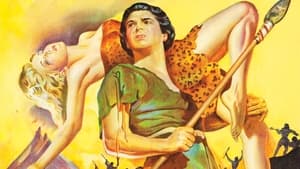Contact: [email protected]
Video Sources 0 Views

One Million BC Colorized 1940: Best Surprising Transformation of Old Films
Synopsis




Introduction
In the realm of cinema, where black-and-white classics hold a timeless charm, the notion of colorizing old films has sparked both curiosity and controversy. One such classic that recently underwent this transformative process is “One Million BC Colorized 1940.” This film, originally a product of the bygone era directed by D. W. Griffith and produced by Hal Roach Studios, now emerges from the shadows of history with a vibrant new palette.
Read Media File Transfer Agreement: Terms and Conditions
Read FAQ
The Significance of Film Colorization
Film colorization, the process of adding color to black-and-white footage, has been a contentious topic in the film industry. Some view it as a way to breathe new life into old movies, making them more accessible and engaging for contemporary audiences. Others argue that it compromises the artistic integrity of the original work. As we delve into the colorized version of “One Million BC,” we aim to explore the significance of this process in preserving and reviving old cinematic gems.
The Making of One Million BC Colorized 1940
The roots of “One Million BC Colorized” trace back to the collaboration between D. W. Griffith and Hal Roach Studios, a duo renowned for their contributions to early cinema. Released in 1940, the film starred Victor Mature as Tumak, Carole Landis as Loana, and Lon Chaney Jr. in a pivotal role. The story unfolds in a prehistoric world where two tribes, the Rock Tribe and the Shell Tribe, navigate the challenges of survival.
Influence of D. W. Griffith and Hal Roach Studios
D. W. Griffith, a pioneering figure in the silent film era, and Hal Roach, known for producing comedic masterpieces, left an indelible mark on “One Million BC Colorized.” Their combined vision laid the foundation for a film that would go on to become a classic. The film’s production was a testament to the collaborative spirit of early Hollywood.
Key Cast Members and Their Roles
Victor Mature’s portrayal of Tumak, the protagonist torn between two tribes, and Carole Landis’s vibrant depiction of Loana, a bridge between cultures, added depth to the narrative. Lon Chaney Jr.’s contribution as Akhoba, the leader of the Rock Tribe, added a layer of complexity to the story. The chemistry among these actors brought the prehistoric world to life.
Overview of Production Challenges and Filming Techniques
Filming “One Million BC Colorized” posed unique challenges, considering the limited technology of the time. The filmmakers employed innovative techniques to create the illusion of a prehistoric setting. The colorization process further enhances the visual appeal, breathing new life into scenes that were once confined to shades of gray.
Exploring the Prehistoric World: Visuals and Effects
The prehistoric setting of “One Million BC Colorized” serves as a captivating backdrop, immersing audiences in a world long lost to time. The film’s nomination for Academy Awards in special effects underscores the groundbreaking visual elements that captivated audiences in the 1940s.
The Role of a Vibrant Prehistoric Setting
The colorized version elevates the impact of the prehistoric landscape, bringing forth the lush greenery, vibrant skies, and the earthy tones of the primitive tribes. The vivid hues contribute to a more immersive experience, allowing modern viewers to connect with the film on a visceral level.
Nominations for Academy Awards and Color Enhancement
The original film received recognition for its special effects, a testament to the ingenuity of the filmmakers in the 1940s. The colorization process enhances these effects, providing a fresh perspective on the technical achievements of the time. The juxtaposition of the old and the new creates a unique viewing experience, prompting audiences to appreciate the craftsmanship of both eras.
Character Portrayals in Living Color
As we delve into the colorized rendition of “One Million BC Colorized,” it becomes evident that the hues breathe new life into the characters and their journeys.
Examining the Nuances of Tumak’s Character
Victor Mature’s portrayal of Tumak gains a renewed vibrancy through color. The subtleties of his character, the conflicts, and the evolution are accentuated, allowing audiences to connect with the emotional nuances of his journey. The colorized version adds layers to Tumak’s narrative, making his struggles and triumphs more palpable.
The Vibrant Portrayal of Loana
Carole Landis’s Loana, the bridge between the Rock Tribe and the Shell Tribe, emerges as a central figure in the colorized version. Her presence is heightened by the vivid colors, emphasizing the cultural and emotional dynamics at play. Loana’s character becomes a focal point for understanding the interconnectedness of the tribes, transcending the limitations of black-and-white storytelling.
Distinctive Visual Styles of Rock Tribe and Shell Tribe
The colorization process accentuates the unique visual styles and cultural attributes of the Rock Tribe and Shell Tribe. From the distinct markings on their bodies to the intricacies of their primitive dwellings, every detail comes to life in vibrant hues. This not only enriches the storytelling but also provides a visual feast for audiences eager to explore the nuances of prehistoric civilizations.
Controversies and Criticisms
While the colorization of “One Million BC Colorized” brings forth a new perspective, it doesn’t come without its share of controversies. One notable controversy surrounds the alleged instances of animal cruelty during the film’s production. It’s essential to address such concerns and acknowledge the ethical implications in both historical and contemporary contexts.
Controversy Surrounding Animal Cruelty
Reports of mistreatment of animals during the filming of “One Million BC Colorized” raised ethical questions that echo through time. As we revisit this classic, it’s crucial to acknowledge the importance of ethical treatment of animals in the entertainment industry. This controversy serves as a reminder of the evolving standards and the responsibility filmmakers bear in portraying the natural world on screen.
Reception, Influence, and Legacy
Understanding how “One Million BC Colorized 1940” was received in its time and the subsequent influence it exerted on cinema helps us appreciate its enduring legacy.
Initial Reception and Subsequent Impact
The original film faced mixed reviews upon its release, with audiences and critics acknowledging the technical achievements but expressing reservations about the narrative. The colorized version, however, breathed new life into the film, garnering renewed interest and appreciation. Modern audiences, with a different cinematic palate, found a connection to the prehistoric tale through the vibrant lens of color.
Enduring Legacy on Depictions of Prehistoric Narratives
“One Million BC Colorized” laid the groundwork for future depictions of prehistoric narratives in cinema. Its influence can be seen in later films, with echoes of the Rock Tribe and Shell Tribe dynamics resonating in productions like “One Million Years B.C.” The film’s legacy persists in shaping how filmmakers approach the portrayal of ancient civilizations and their cultural intricacies.
Revitalizing a Classic: The Art of Colorizing Old Films
The process of colorizing old films involves delicate considerations and a balance between preserving cinematic heritage and introducing contemporary elements.
Film Colorization Process and Cinematic Heritage
Colorizing black-and-white movies is a meticulous process that requires a deep understanding of the original film’s aesthetic and narrative intent. In the case of “One Million BC Colorized 1940,” the restoration work involved a careful study of the director’s vision and the technological limitations of the time. The colorization process becomes a form of artistry, with the goal of enhancing the viewer’s experience while respecting the film’s historical context.
The Debate Between Purists and Proponents
The debate surrounding film colorization persists, with purists arguing that it compromises the authenticity of the original work. On the other hand, proponents see it as a means of introducing classic films to a new generation, bridging the gap between old and contemporary cinema. As we navigate this ongoing discourse, it’s essential to consider the implications of film colorization in preserving cinematic integrity.
The Enduring Appeal of “One Million BC Colorized” in Living Color
As we conclude our exploration of “One Million BC Colorized 1940,” the enduring appeal of experiencing this classic in living color becomes evident.
Reflecting on the Impact of Colorization
The colorized version of “One Million BC Colorized” invites audiences to rediscover the magic of a bygone era. The vibrant hues breathe new life into the storytelling, allowing viewers to connect with the characters and their journey on a deeper level. It serves as a testament to the evolving nature of cinema, where technology can enhance the appreciation of timeless narratives.
Encouraging Exploration of Colorized Films
In the wake of this transformative experience, readers are encouraged to explore other notable colorized films. Each colorization project offers a unique artistic interpretation, providing a fresh lens through which to appreciate the storytelling of yesteryears. By embracing the colorized versions of old films, audiences contribute to the preservation and revitalization of cinematic classics.
In conclusion, “One Million BC Colorized 1940” stands as a captivating example of how colorization can rejuvenate old movies, offering a bridge between the past and the present. As we celebrate the vibrant hues that now grace the prehistoric landscapes and characters, we acknowledge the delicate balance required to honor cinematic heritage while ushering it into a new era. The debate over film colorization will persist, but what remains undeniable is the enduring allure of experiencing a classic like “One Million BC” in living color—a testament to the timeless power of storytelling in any era.













